The Intel 6th Gen Skylake Review: Core i7-6700K and i5-6600K Tested
by Ian Cutress on August 5, 2015 8:00 AM EST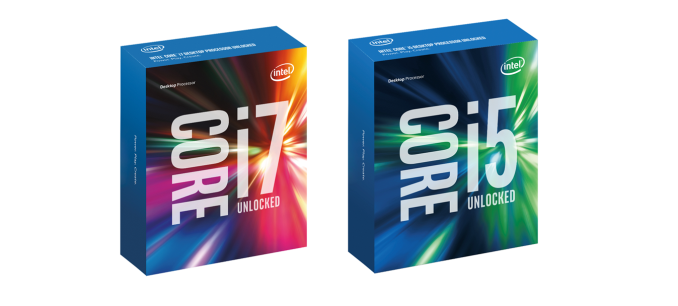
It’s the Intel review you’ve been waiting for. Today is the launch of the first two CPUs from Intel’s Skylake architecture, the 6th Generation Core i7-6700K and the Core i5-6600K. With the new processors we get a new architecture, a new socket, the move to DDR4 and the potential to increase both performance and efficiency at the same time. A lot of readers have asked the question – is it time to upgrade? We had a CPU or two in to test to answer that question.
Launch Day for Skylake-K: August 5th
For those in the industry, predicting Skylake’s launch has been a minefield. Even at Computex in June, some companies were discussing a large six-week window in which they expected Skylake but were waiting on official dates. But as we've seen with a number of previous Intel mainstream launches, Intel likes to aim at the gaming crowds release at a gaming events. It just so happens that today is Gamescom in Germany, two weeks before what everyone expected would be a launch at Intel’s Developer Forum in mid-August.
Today is a full launch for the Skylake-K processors, with the two CPUs being launched alongside new Z170 series motherboards and dual channel DDR4 memory kits. Having spoken to a few retailers, they have stock ready to go today. That being said, a number of them would have liked more stock on launch day, suggesting that they expect the processors to sell out rather quickly when the buy buttons are activated.
All the motherboard manufacturers should be ready to go as well – take a look at our breakdown of the retail motherboard information we could get before launch for a good overview of what to expect this generation. DDR4 manufacturers have been selling the new standard of memory for over a year due to Intel’s high-end X99 platform supporting it, but today will see the introduction of dual channel kits to go with the Skylake platform as well as a number of higher speed modules ready and waiting.
‘Where are the non-K processors?!’ you may ask. Intel tells us that these will be released later in the year, sometime in Q3. As a result, we have to wait and see what range of models come out at that point and we will get a number in to review.
Retail Packaging
To go with the launch is a new look of Intel's Core processor packaging, in part to appeal to the gaming crowd. As the gaming industry is considered one of the few remaining areas for potentially large growth in the PC industry, Intel is increasing its focus on gaming as a result.
Aside from changing the graphics on the box, it has been reported – and seemingly confirmed by the thinner boxes in the official pictures from Intel – that these processors will not be shipped with a stock Intel cooler. Users will have to purchase third party coolers. Part of this makes sense – overclocking processors need beefier cooling in order to extract the maximum overclock and buying something above the stock cooler should be good. The downside of not having a stock cooler means an added cost to the end user. However as the hole mounting for the new socket, LGA1151, is similar to that of LGA1150/1155/1156 – spacing is still 75mm – many existing CPU coolers for the current LGA115x sockets should be compatible, making it possible to reuse many coolers for no more than the cost of a new thermal paste application.
For users looking for a new air or liquid cooler, head on over to our recent roundup of Top Tier CPU Air Coolers Q3 2015: 9-Way Roundup Review and the Closed Loop AIO Liquid Coolers: 14-way Mega Roundup Review published last year.
The Skylake CPUs: Intel’s 6th Generation Core
Intel’s tick-tock strategy has been the bedrock of their application to bring new processors to the market, growing in terms of user experience for either power, efficiency, or both. It has been noted that certain generations either have an enterprise focus or a mobile-first focus, which always seems to tip the scales in one direction of the other. However, with the recent announcement of a third CPU line at 14nm called Kaby Lake for 2016, tick-tock just became tick-tock-tock.
| Intel's Tick-Tock Cadence | |||||
| Microarchitecture | Process Node | Tick or Tock | Release Year | ||
| Conroe/Merom | 65nm | Tock | 2006 | ||
| Penryn | 45nm | Tick | 2007 | ||
| Nehalem | 45nm | Tock | 2008 | ||
| Westmere | 32nm | Tick | 2010 | ||
| Sandy Bridge | 32nm | Tock | 2011 | ||
| Ivy Bridge | 22nm | Tick | 2012 | ||
| Haswell | 22nm | Tock | 2013 | ||
| Broadwell | 14nm | Tick | 2014 | ||
| Skylake | 14nm | Tock | 2015 | ||
| Kaby Lake (link)? | 14nm | Tock | 2016 ? | ||
Intel’s early issues with 14nm yields have been well documented and we won’t go into them here, but 14nm is a more expensive process with an increased number of lithography steps as we reach the limits of current semiconductor technology. FinFET was introduced back in 22nm, but to move down to 10nm makes either the current process more expensive or other methods have to be used. As a result, we see Moore’s Law stretching out from an 18-24 month cadence to a 24-30 month cadence for the first time in fifty years. As we’ve seen with the graphics card market recently stalling at 28nm, there is a need (or at least opportunity) to develop more power efficient architectures rather than just relying on die shrinks to do it for you.
Future development aside, today Skylake will hit the shelves in the form of two overclockable processors, the Core i7-6700K and the Core i5-6600K.
| Intel i7 Lineup | |||
| i7-4770K | i7-5775C | i7-6700K | |
| Price | $339 | $366 | $350 |
| Cores | 4 | 4 | 4 |
| Threads | 8 | 8 | 8 |
| Base CPU Freq. | 3.5 GHz | 3.3 GHz | 4.0 GHz |
| Turbo CPU Freq. | 3.9 GHz | 3.7 GHz | 4.2 GHz |
| Graphics | HD 4600 (GT2) | Iris Pro 6200 (GT3e) | HD 530 (GT2) |
| EUs | 20 | 48 | 24 |
| iGPU Freq. | 1250MHz | 1100MHz | 1150MHz |
| TDP | 84W | 65W | 91W |
| DDR3/L Freq. | 1600MHz | 1600MHz | 1600MHz |
| DDR4 Freq. | - | - | 2133MHz |
| L3 Cache | 8MB | 6MB | 8MB |
| L4 Cache | None | 128MB (Crystal Well) | None |
| Interface | LGA1150 | LGA1150 | LGA1151 |
As with previous nomenclature, the i7 model will be quad core CPU with HyperThreading and 8MB of L3 cache. This matches up with the Haswell parts to which Skylake is more closely aligned (Desktop Broadwell is rather a blip, using an external on-package eDRAM and you can read our review here), in a large number of aspects including the other cache levels. The 6700K runs at a base frequency of 4.0 GHz and an all-core frequency of 4.2 GHz. This is a slight speed bump over the 4770K which was launched at the start of Haswell, but a minor reduction in clockspeeds compared to the i7-4790K, which was an upgraded Haswell part launched later under the name of ‘Devil’s Canyon’.
The integrated graphics nomenclature has changed, with the new i7-6700K having the Intel HD 530 graphics, compared to the HD4600 in the Haswell parts. We know that the HD 530, like the HD 4600, has 24 of Intel’s execution units in the iGPU, and they run at a peak frequency of 1150 MHz. The introduction of the HD 530 marks the launch of Intel’s 9th generation graphics, and we'll cover Gen9 in a bit more detail later.
| Intel i5 Lineup | |||
| i5-4670K | i5-5675C | i5-6600K | |
| Price | $242 | $276 | $243 |
| Cores | 4 | 4 | 4 |
| Threads | 4 | 4 | 4 |
| Base CPU Freq. | 3.4 GHz | 3.1 GHz | 3.5 GHz |
| Turbo CPU Freq. | 3.8 GHz | 3.6 GHz | 3.9 GHz |
| Graphics | HD 4600 (GT2) | Iris Pro 6200 (GT3e) | HD 530 (GT2) |
| EUs | 20 | 48 | 24 |
| iGPU Freq. | 1200MHz | 1100MHz | 1150MHz ? |
| TDP | 84W | 65W | 91W |
| DDR3/L Freq. | 1600MHz | 1600MHz | 1600MHz |
| DDR4 Freq. | - | - | 2133MHz |
| L3 Cache | 6MB | 4MB | 6MB |
| L4 Cache | None | 128MB (Crystal Well) | None |
| Interface | LGA1150 | LGA1150 | LGA1151 |
The i5 model for Skylake also has quad cores, but without HyperThreading and only 6MB of L3 cache. Like the i7, it also has the Intel HD 530 graphics but operates at a lower frequency band.
Both the Skylake processors will support DDR4 and DDR3L memory in order to ease the transition to DDR4 for the mainstream segment, although it should be said that DDR3L is implemented here due to its lower than standard DDR3 operating voltage of 1.35 volts. This more closely aligns with DDR4’s standard voltage of 1.20 volts or the high end DDR4 kits at 1.35 volts, and as a result we are told that motherboards that support DDR3L will typically only be qualified to run DDR3L kits, rather than DDR3 kits.
This leads onto the point that both of the K processors for Skylake sit at 91W, which is a small increase over Haswell at 84W and Devil’s Canyon at 88W. In the past Intel has historically run a 1:1 policy whereby a 1% performance gain must come at a maximum of a 1% power penalty – this was adjust to 2:1 for Broadwell, and we should assume that Skylake had similar requirements during the planning stage. Depending on the specific architecture details, one potential source for this increase in power consumption may be the dual memory controller design, although Skylake has a significant number of features to differentiate itself from Haswell.


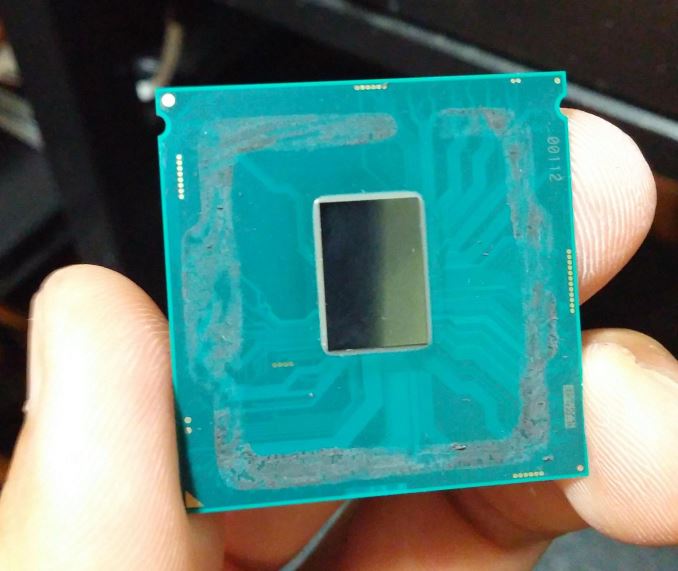
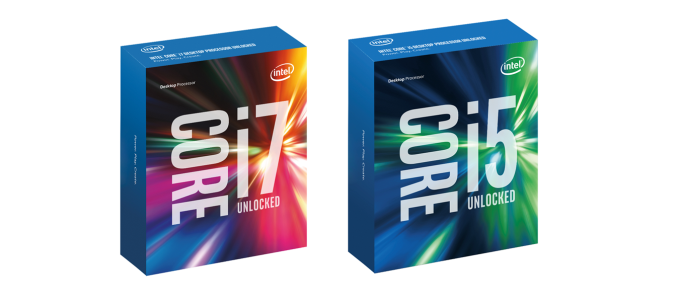
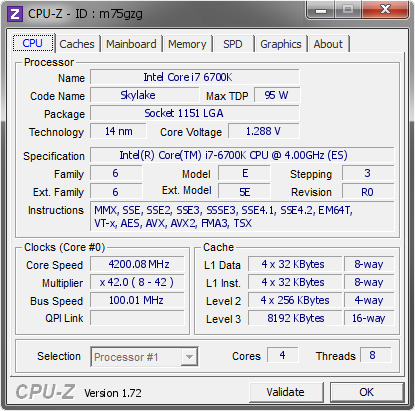
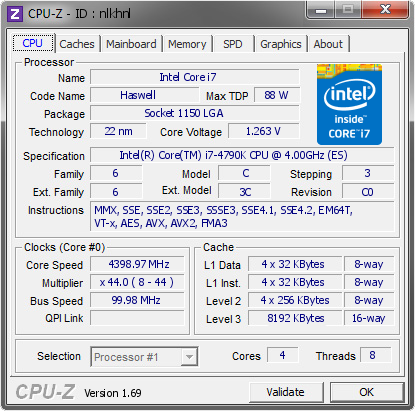
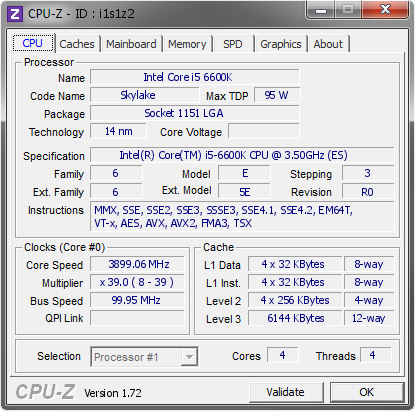
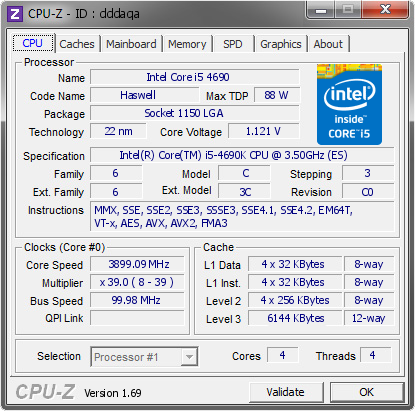








477 Comments
View All Comments
boeush - Friday, August 7, 2015 - link
A good point, but I think you missed this page in the review:http://www.anandtech.com/show/9483/intel-skylake-r...
The other pages where all CPUs are normalized to 3 Ghz are for generational IPC comparison, not memory scaling. The later "what you can buy" pages repeat all the same tests but with all CPUs at full default clocks, as well - to gauge the combined effect of IPC and frequency scaling across generations.
Still missing and hopefully to be addressed in a future follow-up, is a study of generational overclocked performance, and performance under DDR4 frequency scaling with and without CPU (other than memory) overclocking.
MrSpadge - Friday, August 7, 2015 - link
Well, on the page before the one you linked Ian says:"For these tests, both sets of numbers were run at 3.0 GHz with hyperthreading disabled. Memory speeds were DDR4-2133 C15 and DDR3-1866 C9 respectively."
I think this applies to both memory scaling pages.
You've got a good point, though, that the "what you can buy" section compares DDR4-2133 and DDR3-1600 (latency unspecified) at default CPU clocks. And from a quick glance the differences there are not that different from the ones obtained in the dedicated memory scaling section.
Nutti - Friday, August 7, 2015 - link
Left out all the AMD FX processors? Looks pretty bad for AMD this way. FX is still much better than 7870K. Zen will nicely catch up with Intel. AMD needs 40% improvement over FX8350 and they will sure get that through better IPC and multithreading.Bambooz - Friday, August 7, 2015 - link
Wishful thinking from a fanboiOxford Guy - Friday, August 7, 2015 - link
Ad hominem isn't a rebuttal, bud.Oxford Guy - Friday, August 7, 2015 - link
The FX does nicely in a modern game like Witcher 3 that uses all of its threads as can be seen here: http://www.techspot.com/review/1006-the-witcher-3-...Anandtech has been doing the "let's throw in a dozen APUs and completely ignore FX" for some time now. The only thing it accomplishes is obscuring the fact that the FX can be a better value for a workstation (rendering and such) that also has some gaming requirements.
nils_ - Friday, August 7, 2015 - link
You probably should have run the Linux Tests through Phoronix Test Suite, the Linux Bench seems rather outdated with Ubuntu 11.04 (we are on 15.04 now).eeessttaa - Friday, August 7, 2015 - link
Great article as always. I wish intel would leave the fivr in it. i know how hot it got but instead of removing it they should've improved on its design.Nelviego - Friday, August 7, 2015 - link
Seems it might finally be time to OC my i7 2600k and give it another 4 1/2 years. ;)Oxford Guy - Friday, August 7, 2015 - link
Intel made everyone think Skylake was going to be a massive improvement on all fronts. Massive IPC increase. Massive technological advance. People shilled for Intel by claiming it was highly likely that Skylake wouldn't need a new socket and would just use LGA 2011-3.Instead, we get ... what? Chips that aren't significantly better than Haswells, let alone Broadwell?
I guess Intel is sandbagging even more than usual since AMD isn't doing anything new on the CPU front. So much for all of the intense Skylake hype. It amazes me, too, how people are blithely now saying "I guess I'll wait for Kaby Lake" -- the same people, often enough, who said Skylake would revolutionize computing.
It looks like this is what happens when Intel has minimal competition. The FX chips are still clinging to relevance now that consoles have 8 threads and weak individual cores (not that you'd know it based on the way this site never puts even one of them into its reviews in favor of weaker APUs) -- and because rendering programs like Blender can use their threads which can make them a decent value for budget workstation use, but their design is from 2012 or so. Overclocking is also keeping old chips like the 2500K viable for gaming.
I admit I feel for the hype a bit. I was expecting at least some sort of paradigm-shifting new tech. Instead... I don't see anything impressive at all. A new socket... a small gain in efficiency... rinse repeat.
An article I read recently said that overclocking will become increasingly non-viable as process nodes shrink. It seems we're seeing that already. The article says an Intel executive said Intel is taking overclocking seriously but the company may not have much choice.
Intel should have included hardware devoted to h.265 encoding for Skylake at least. Maybe it did, but it's not like I can tell by the charts provided. What is the point of putting in that h.265 encoding chart and not including the fastest non-E Haswell (4790K) and a Haswell-E (5820K)? It makes it look like your site is trying to hype Skylake. Don't you think people who are doing a lot of tasks like that which require serious performance (like the "slowest" setting in Handbrake) are going to need to see a comparison with the best available options?